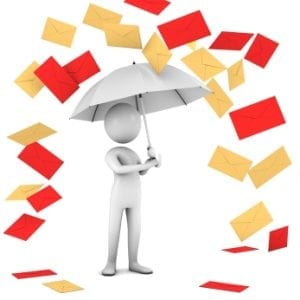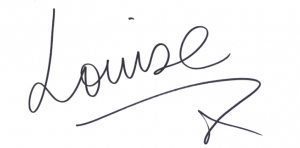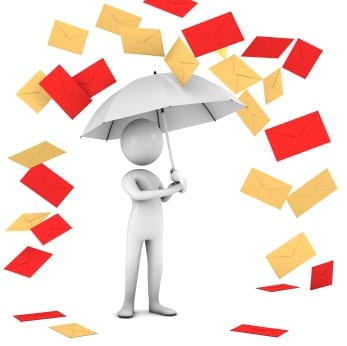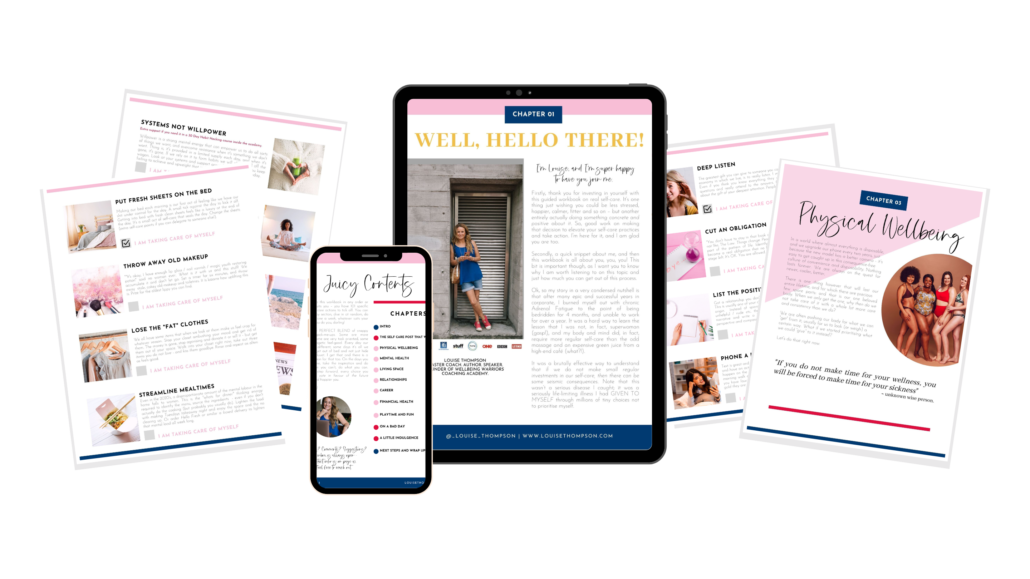 Here’s a newsflash for you. You are not, repeat not, put on this earth to be an Email Answering Machine. I know, astonishing! Some days for many of us though it can feel exactly like this. That our email is our nemesis, and that how ever hard we work we can’t quite keep it under control. It’s just SO stressful! The more we reply the more the email responses multiply! It reminds me of the greek mythology of the Hydra, the ancient serpent-like water beast that possessed many heads – and for each head Hercules cut off it grew two more. That’s how I used to feel about my email!
Here’s a newsflash for you. You are not, repeat not, put on this earth to be an Email Answering Machine. I know, astonishing! Some days for many of us though it can feel exactly like this. That our email is our nemesis, and that how ever hard we work we can’t quite keep it under control. It’s just SO stressful! The more we reply the more the email responses multiply! It reminds me of the greek mythology of the Hydra, the ancient serpent-like water beast that possessed many heads – and for each head Hercules cut off it grew two more. That’s how I used to feel about my email!
Email is an essential life and business tool, yet it can also create a huge amount of stress, and so having a few smart strategies to manage it better can really help how you breeze through your day. Here’s how to tame the email monster and reduce stress pronto:
1. Expectation Management – SELF
Boundary setting for yourself is the first step. What is a reasonable expectation for you in terms of quantity of time daily to respond to email, and timeliness of response. Work it out. Is it 2 hours daily? 4 hours? Half an hour? And is it a 48 hour turnaround, or 4 hours? It may well vary by day depending on your job: maybe you need 3 hours with a 1 hour turnaround on Mondays but Wednesday, Thursday and Friday can be an hour with a 4 hour time frame. Take a moment to step back and assess what is truly reasonable for your particular situation. Set the expectations for yourself. The key to email nirvana is choosing not to be dipping in and out of your inbox at random all day.
2. Expectation Management – OTHERS
If you train people to expect instant responses to their stuff by always replying instantly to their stuff then that’s what they are going to expect from you on an on-going basis! Being able to articulate to others your connectivity boundaries will help them respect them, and help you to increase productivity. For instance, you may want to set up an auto-responder that bounces out each time you receive an email that lets the sender know you have received their email and that you will be back to them within 48 hours, but that if it’s urgent to call you on your mobile and you will be happy to help. I have just this system and I love it. I like thanking people instantly for their message so they know I have got it, and letting them know when they can expect a reply. It takes the pressure of me responding instantly as I know they will not be expecting an immediate reply. I have a lot of clients who have implemented this system and it’s reduced their email stress by a significant amount just like that.
3. Diarise Reactive v’s Proactive Time
This is just SO important. The thing with email is it pulls us into REACTIVE mode. Which is fine, some of the time we really need to be in reactive mode and deal with admin and bits and pieces. However, here’s the thing. If we are in reactive mode most of the time then we will find that out long term projects, the big important juicy stuff, very often will just sit on the To Do list and never be achieved. That’s because the big, important projects, need PROACTIVE time. They need your brain to be in the state of creativity and innovation and to have good chunks of devoted, dedicated time free of distraction. With reactive time it’s easy to see the whole day frittered away in a frenzy of activity without anything significant having been achieved. If this is sounding familiar to you consider setting stronger boundaries around your proactive and your reactive time.
If I hadn’t got good at this I can say for sure my book would never have been written and these blogs and columns would never come out to you each week, every week! It’s by enforcing the discipline of “proactive” time every Thursday morning, no matter what, that makes it a happening thing. I do my most creative work in the morning, so Thursday morning is my writing morning, I will go be creative and have my delicious writing time for three hours every Thursday morning. And crucially I WILL NOT check my email before I do it. I’ve checked it Wednesday night, I know everything is fine, if it’s not someone can call me. I keep my brain clear and clean to do some proactive work. I simply can’t write with any clarity or inspiration if I am dipping in and out of Facebook and email and whatnot. My best work is in this dedicated 3 hours of proactive time.
I highly recommend you look at your To Do list and your diary and schedule in a few hours a week of dedicated “Proactive” time. Email OFF. Inspiration ON. Stop your email dictating what you achieve and set the agenda yourself. Give the big, juicy, important stuff some space to flourish.
4. Reconnect with your TRUE priorities
Here are some good questions to ask yourself when dealing with the Hydra of Email:
- Is it really urgent? Really?
- Is it really important? Really?
- Does it move me towards my 6 big goals for the year (see my free “How to be a Time Ninja” e-book to set yours: this will absolutely change your life for the better!)
- Is not responding to this email for a few hours going to put someone in harms way or land me in jail?
It’s so easy to be stuck in the habit of thought that every email is both urgent, and important. But you know, actually that’s rarely the case. Practicing a bit of discernment can reduce stress instantly.
5. Batch. Batch. Batch.
Batch your email responses in the times you have set out in alignment with your connectivity boundaries you set in the first point of this article. Then batch those replies. Batch Batch Batch. Set a time twice a day (or whatever works for your schedule and life/business) and spend a short amount of time (half an hour? An hour?) blasting through replies and nothing else. Dedicated email time. . This is staggeringly more efficient than answering each time your email pings.
6. Set a timer
Why? Because it will force you to be succinct! Because it will give you a true idea of how much time is sucked into email management and if it’s a time frame that feels comfortable for you. You can set yourself a challenge or target to see how many you can get through in your allotted time frame, I do this and it’s kinda fun to try and beat my projected time!
7. Smart responding to common queries.
Make a number of template signatures to the 3 or 4 emails you get the most often. Set them as a signature in your email. Then you can in one click add them as a reply to any email. Do a quick customisation and personalisation to it, and off you go. Send! This one tip saves endless cutting and pasting, or, rewriting the same answers over and over again. So fast, yet also personal and connected. Winner.
8. Pick up the phone
Call me old skool but I started work before email existed. Scary I know, but, you know what, we still did business! Shit happened! Stuff got sold. Meetings got organised. Relationships got built. Things got fixed.
It’s easy to forget that some queries can be easily solved in a 60 second phone call. Ending up in an endless email trail back and forth trying to fix a meeting time or particular detail is such a time-suck. This can frequently be short circuited by picking up the phone, the old fashioned way, and making a quick phone call. RADICAL!
9. Work offline
You know when you are clearing your email you get that awful sinking feeling: as fast as you are burning through those replies the damn replies to your replies start dinging in faster than you can type! It’s beyond maddening as it actually feels like you are going backwards. It’s the typical Email Hydra situation: an absolute endless task because as fast as you can reply the faster the responses come in. So the feeling of being “on top of it” never actually comes?
Well, I sort of discovered and answer to this one by accident. My email broke for a while, some sort of epic fail where it would give me the spinning beachball of doom every time I was typing an email. It was beyond annoying, one email would take 4 or 5 frustrating minutes to type rather than 30 seconds as it kept freezing all the time. The solution I found was to turn my email to “work offline” so it stopped it connecting to the internet. So I would work through my email and it would all stay stuck in the outbox where it couldn’t send. Then, when I was done, inbox empty, I would turn back to “Work Online” and just go do something else, have lunch, go to the gym, make phone calls, do my paperwork, go have my proactive time, whatever. Basically just walk away whilst it all sent. It was such a thrill as in that time the inbox was zero because I had had NO replies to anything I had sent anyone. Inbox Nivana: BAM!
What started off as a really annoying fault actually ended up being brilliant, and it’s now how I process all my email. In my set email times I will “work offline” and batch and clear the whole lot. Then I can get on with something different and let it all send in one batch later so I won’t get distracted with all the replies. It’s great because I get the sensation of progress (empty inbox) and more time to work undistracted by incoming messages. I am more productive in my email time, more connected to giving quality connected relies AND I get the feeling of progress as the inbox clears with each email I type. Email joy right there!
10. Remember: you are NOT an Email Answering Machine!
Unless that is truly your job description then email is just a tool to get your job done, it is not the boss of you. Take the control back and reconnect with your true priorities, set your boundaries, and implement one or more of these strategies to beat the Email Hydra today and reduce inbox stress!
Love to know which of these strategies work for you, come let me know on Facebook, and if you know someone who is feeling Inbox Overwhelm please do share this with them!




